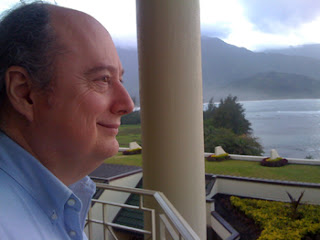| Year | Awardee |
|---|
| 2024 | Tony Hey |
| 2022 | Paul Courant |
| 2020 | Francine Berman |
| 2017 | Herbert Van de Sompel |
| 2014 | Donald A.B. Lindberg |
| 2011 | Christine L. Borgman |
| 2008 | Daniel E. Atkins |
| 2006 | Paul Ginsparg |
| 2004 | Brewster Kahle |
| 2002 | Vinton Gray Cerf |
| 2000 | Tim Berners-Lee |
It has just been announced that at the Spring 2025 Membership Meeting of the
Coalition for Networked Information in Milwaukee, WI April 7
th and 8
th, Vicky and I are to receive the
Paul Evan Peters Award. The press release announcing the award is
here.
Vicky and I are honored and astonished by this award. Honored because it is the premiere award in the field, and astonished because we left the field more than seven years ago to take up our new full-time career as grandparents. We are all the more astonished because we are not even eligible for the award; the
rules clearly state that the "award will be granted to
an individual".
You can tell this is an extraordinary honor from the list of previous awardees, and the fact that it is the first time it has been awarded in successive years. Vicky and I are extremely grateful to the
Association of Research Libraries,
CNI and
EDUCAUSE, who sponsor the award.
 |
Original Logo
|
Part of the award is the opportunity to make an extended presentation to open the meeting. The text of our talk, entitled
Lessons From LOCKSS, with links to the sources and information that appeared on slides but was not spoken, should appear here on April 7
th.
The work that the award recognizes was not ours alone, but the result of a decades-long effort by the entire
LOCKSS team. It was made possible by support from the LOCKSS community and many others, including Michael Lesk then at NSF, Donald Waters then at the Mellon Foundation, the late Karen Hunter at Elsevier, Stanford's Michael Keller and CNI's Cliff Lynch.







